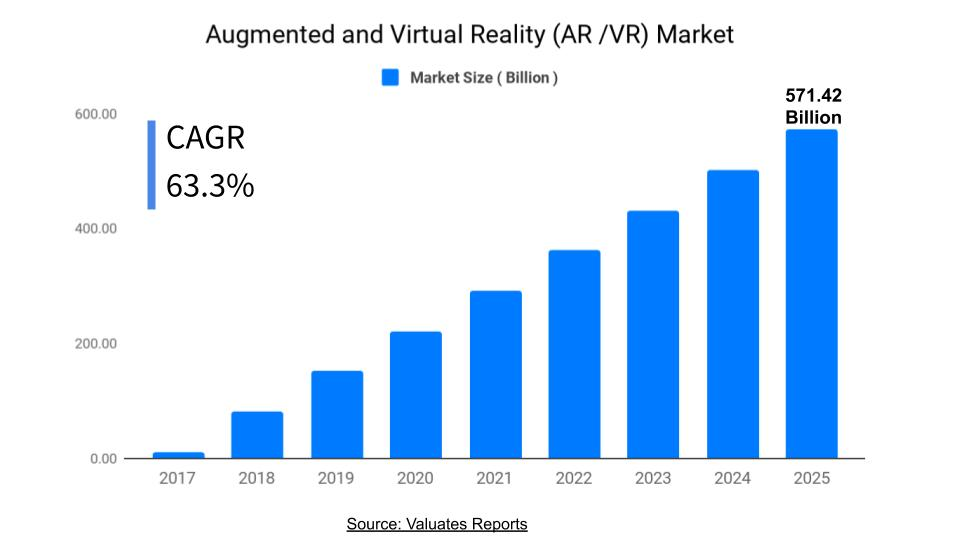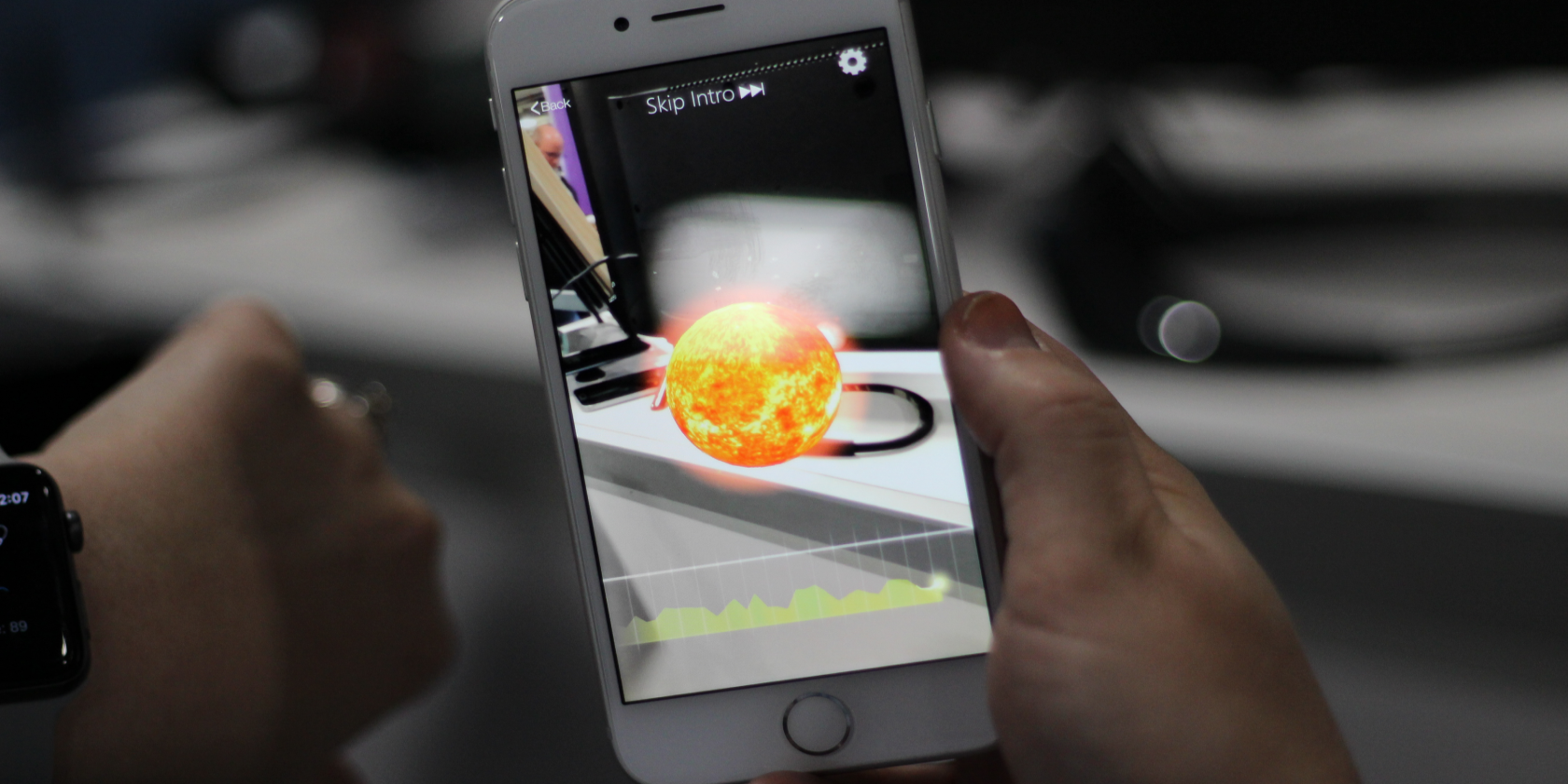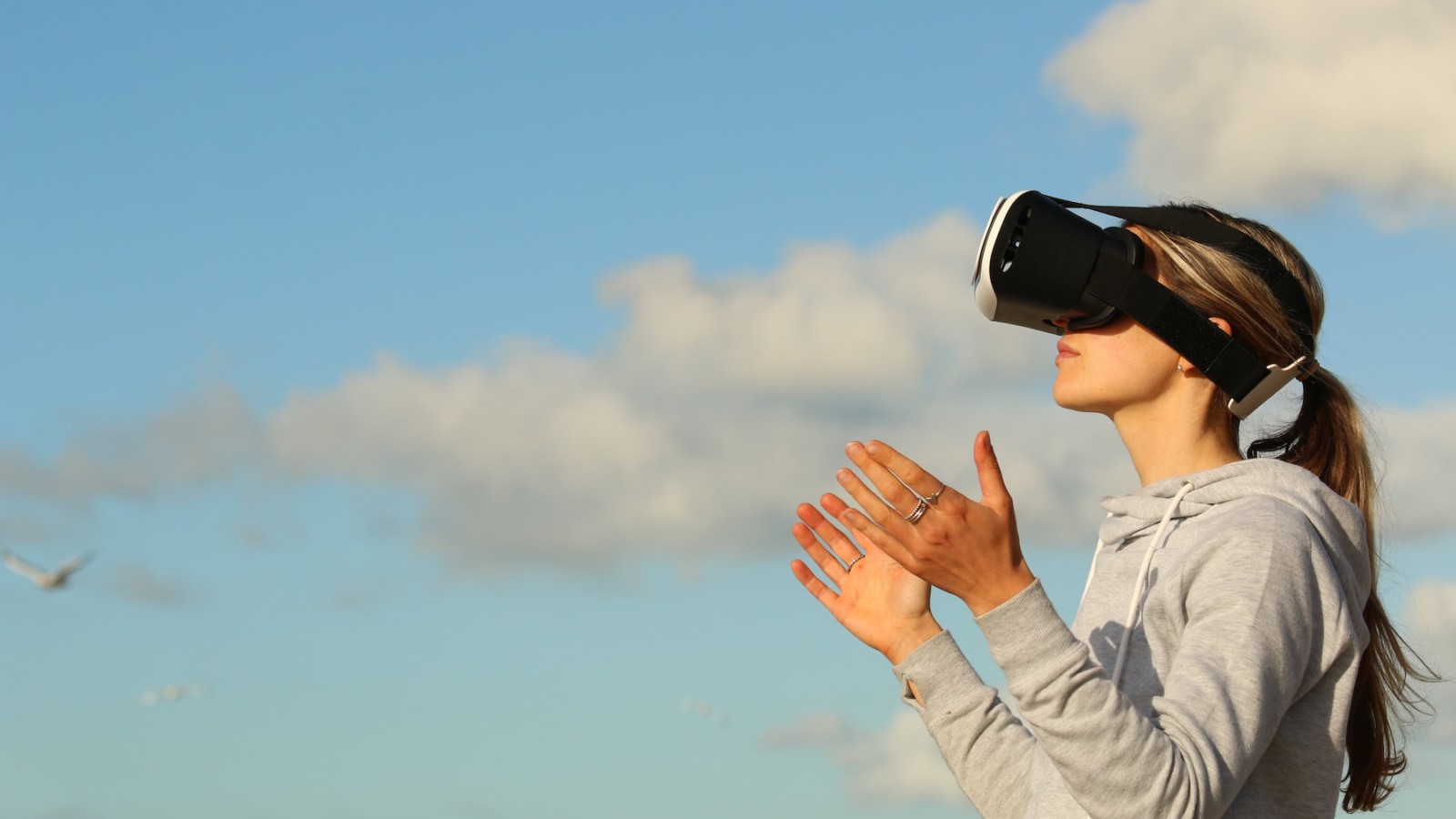From exercise trackers to healthy delivery subscription services, mindfulness and wellness technology is all around us. With the development of augmented reality technology and its application within the world of self-improvement, could we see widespread AR adoption in the everyday wellness markets?
Although wellness technology is readily used today, with heart-rate monitoring wearables, virtual therapy sessions and biomarker testing, we may soon see the world of technology-driven wellness become bolstered by the growth of the AR and VR market.

Combined, the augmented reality and virtually market is set to grow to $571 billion by 2025 – around double its size in 2021.
Likewise, the global wellness market has been growing significantly in recent years, and the technologies are naturally beginning to overlap and create engaging apps and platforms that can enable mindfulness and clarity of mind in daily life.
Let’s take a look at how augmented reality and the world of wellness are intertwining to deliver engaging and intuitive apps for users:
AR Paving The Road to Recovery
Healium AR is a neurofeedback smart app that’s available on the iOS app store. It works by monitoring your brain activity and creating a real-time visualisation of your mental state. For this to work, the app pairs with an Apple Watch which uses its built-in heart rate tracker to monitor various metrics.
The data gathered is then used to generate a range of narrative games and interactive challenges where your success is predicated fully on your ability to give off positive vibes. One augmented experience enables you to control your breathing in order to hatch butterflies from a chrysalis, while another task rewards you for lowering your heart rate by illuminating a planet.

The app has proved to be effective for veterans suffering from trauma and PTSD as a result of active combat. “Using Healium AR just puts me in a really good state of mind,” explained Steve Mills a US Navy Commander. “It’s cumulative, it builds up over time but you learn how to deal with it. I have several outlets. Healium AR is one of them. I’m not afraid of the memories. But I have to control them.”
Mills uses the app 3-4 times a day and uses his Apple Watch to monitor his heart rate as he tries to illuminate an augmented reality solar system via his breathing.
Reducing Anxiety
Businesses in Spain have started to sign up to Psious, an app that combines augmented reality and virtual reality to help mental health and behavioural issues that can range from phobias to anxiety disorders.
Xavier Palomer, the company’s chief executive said: “We initially launched Psious to provide exposure therapy; you can use AR to show spiders to someone who is afraid of them, for example, without having to show them real ones or rely on imagination.”
Palomer created Psious after noticing that the relaxation techniques his friend had used to overcome his fear of flying could have wider appeal.
As clients were beginning to introduce mindfulness programmes in their office, Palomer’s idea was quickly adopted. Subsequently, as AR and VR technology became more accessible, the platform became cheaper to run. Psious immerses users into their virtual environments to help them familiarise themselves with their fears – whether it involves confronting heights, being on an aeroplane, or even dealing with social environments.
Despite being a key tool for users to mitigate their fears and anxiety disorders, Psious isn’t the only app on the market designed to help ease stress. Other services like Clevr and Guided Meditation are developed with the aim of easing anxiety and phobias.
Healthy Eating
Generally, when we track our food, exercise and various other lifestyle factors, we tend to improve our wellness levels. This may be unsurprising to users who have conducted some form of photo food logging through apps like Healthie or have signed up to services like MyFitnessPal.
Having access to a wealth of information on your smartphone offers a fresh perspective and helps users to become more aware of their intake. However, it’s easy to forget to log your food or to go through the rigmarole of uploading information. If you don’t have access to a personal trainer or dietitian, it can be easy to lose focus and fail to keep up with your healthy commitments.
Imagine if a pair of glasses could detect the food on your plate. Instead of having to log in and enter the details of every item and portion size – whether it’s a bowl of pasta, apple slices or pizza – the technology could automatically detect what you’re eating and how much of it.
As you eat, the portion change is monitored and the relevant information displayed as an augmented overlay on your lenses. Although much of the technology under the hood will revolve around deep learning and computer vision, the way it will be relayed to users will be AR.
While computer vision and augmented reality aren’t the same, AR applications are heavily reliant on the technology to understand what’s in view. Wellness apps like Lose It is already experimenting with computer vision to help users log food effectively.
With AR eyewear set to become a key feature over the coming years, instead of relying on our smartphones or having to wear bulky lenses, we’ll soon be able to fit AR lenses into regular frames and
Not very far in the future, instead of using our smartphones or having to wear bulky glasses, we’ll be able to fit AR lenses into regular frames and practice a healthy lifestyle in a much more immersive manner.
Augmented Fitness
There are numerous apps that feature augmented reality for fitness, especially those that utilise the gamification of workouts. They can be used in a myriad of ways, whether you’re at home, in the gym or outdoors.
When it comes to fitness using augmented reality, some tools work via smartphones only, while others utilise smart glasses that work alongside apps like Solo Wearables or an AR-enabled device to wear on your head.
The AR wearables market is expanding, which could have big ramifications for the augmented fitness industry because of the inconvenience of carrying smartphones while working out. With hands-free use, it can lead to safer and more productive workouts overall.
There are also systems with more complex solutions like vSports that can go beyond AR and require additional hardware or software.
One of the leading examples of an AR gamified app designed to help promote healthy living and exercise comes in the form of Zombies, Run. Unlike other AR gaming titles like Pokemon Go, Zombies, Run places exercise at the core of its goals for users. To help encourage exercise, the app interacts with users through its headphones, where users listen and follow along as helicopter pilots help them to outrun a zombie apocalypse.
Another, somewhat less dramatic approach to augmented exercise is AR Runner, an app that superimposes checkpoints for users to run through and challenge their best times.
The world of augmented reality, wellness and mindfulness are combining to create truly immersive experiences that are designed to keep users motivated and reward them for their efforts. Whether it’s visualisations created by controlled breathing or escaping from a zombie apocalypse, AR may well play a key role in helping us to become healthier and happier in our daily life.


